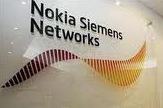  Data from Nokia Siemens Networks, collected in its MBit Index, has revealed a 54% increase in mobile data traffic in India between December 2011 and June 2012. The MBit Index report aggregates primary data real traffic across all the 2G (GSM and EDGE) and 3G multivendor networks managed by Nokia Siemens Networks for operators in India.
The company currently provides 30% of the total 2G and 3G networks in India which provide services to about 300 million subscribers. This large sample size, amounting to a third of India’s 2G and 3G mobile networks, offers an excellent insight into data traffic across all networks in the country.
The report further reveals that data traffic generated by 3G services has increased by 78% while that of 2G services has increased by 47% during the same period. While 2G users across the country are consuming three-quarters of the total mobile data traffic, on average, 3G users consume four times more data than 2G users. At this pace, Nokia Siemens Networks expects India’s mobile data consumption to double by June 2013.
“Our report highlights India’s enormous appetite for consuming data services on the go and hence the need to provide high quality mobile broadband services to satisfy users,” said Sandeep Girotra, head of India region at Nokia Siemens Networks. “2G has been relatively successful in driving mobile broadband use in India, but we are now witnessing 3G pushing the mobile broadband use to unprecedented levels.”
“While it’s important that 2G networks need to be constantly strengthened across the country, 3G network coverage, especially in residential areas, needs to be enhanced. In addition, further improving the quality of data services and fulfilling expectations of various user segments are vital to acquiring, satisfying and retaining mobile broadband customers,” said Girotra.
Nokia Siemens Networks’ MBit Index indicates that despite low 3G device penetration, by the end of June 2012 3G has outpaced 2G in terms of data traffic growth. As 2G networks have contributed over 75% of the total data traffic generated, it is expected that 2G will continue to play a pivotal role in providing basic mobile internet in India. Therefore, 2G is likely to remain a focus area for operators. However, with 3G data now generating 25% of the country’s total mobile data traffic, 3G is likely to be the driver for continued high data growth in the country.
According to the report, a first time 3G user consumes close to 400 MB (megabytes) of data every month compared to about 100 MB consumption over 2G. The report further reveals that the recent tariff reductions in 3G services have resulted in doubling 3G data traffic month on month. It points out that affordable, high-speed broadband availability encourages heavy data consumption.
Web browsing contributes 81% of 2G data traffic while downloading videos constitutes 17%. The report also indicates a steady growth of 4% in multimedia content traffic over 2G networks across the country from December 2011 to June 2012.
Nokia Siemens Networks’ MBit Index reports that 3G data use is rising in metro telecom circles while 2G use is stabilizing. It further indicates that category A and B telecom circles together contribute 72% of mobile data traffic, thanks to improved internet speed on 2G networks, and the availability of 2G and 3G dongles at affordable prices. Category B circles have witnessed the strongest demand for 3G services with a growth rate of more than 87% between December 2011 and June 2012.
|